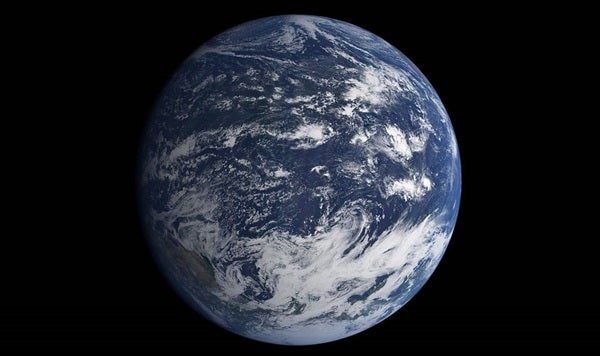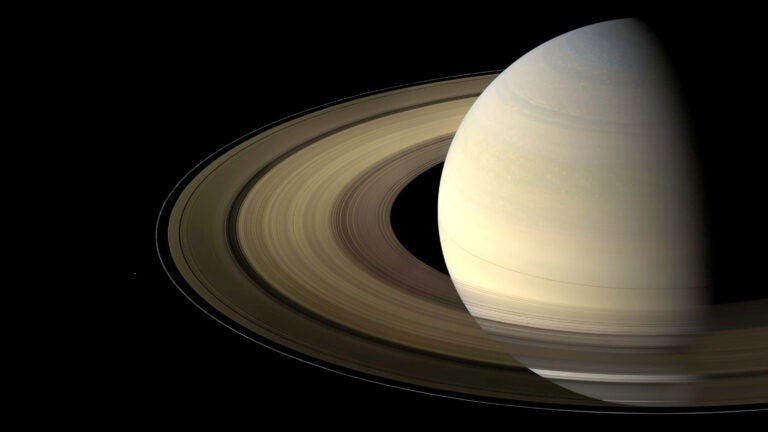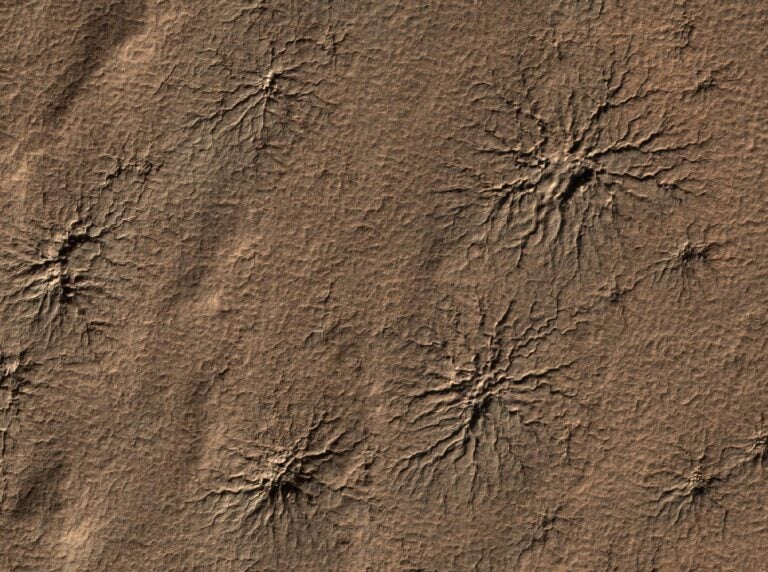New research suggests ancient Earth was a water world, with little to no land in sight. And that could have major implications for the origin and evolution of life.
While modern Earth’s surface is about 70 percent water-covered, the new research indicates that our planet was a true ocean world some 3 billion years ago. At this point, only scattered archipelagos breached our global ocean’s briny surface. That is, if any land existed at all.
The scientists based their findings on unique rock samples found in Western Australia’s Panorama district. Because rocks carry imprints of the environments they formed in, the researchers determined the rocks formed in a hydrothermal vent system on the sea floor about 3.24 billion years ago. Over the eons, the rocks were turned on their side and exposed, which allowed scientists to investigate Earth’s watery past from the convenience of dry land. This led them to conclude that ancient Earth may have been a waterlogged planet without any significant landmass.
“An early Earth without emergent continents may have resembled a ‘water world,’ providing an important environmental constraint on the origin and evolution of life on Earth, as well as its possible existence elsewhere,” wrote the authors of the new study, which was published March 2 in Nature Geoscience.

Could humans ever live on Mars? What are we doing to prepare ourselves? Astronomy and Discover magazines have your handbook for settling the Red Planet: Our free downloadable eBook, Martian Homes & Gardens.
Water water everywhere
Despite Earth’s abundant present-day oceans, many mysteries remain about their origins. Did Earth always contain water, or was it delivered later? If later, how much later? And was the source of the water comets, asteroids, or something else?
Scientists are still pondering these questions and more. This is because the evidence — like ancient minerals called zircons that seem to have formed in a watery environment — clearly implies that Earth sported water since about 4.4 billion years ago, just after our planet came to be. That’s a long oceanic history.
However, it’s less clear how much water early Earth actually had. And by studying their chunk of the ancient seafloor, the researchers were able to probe that question.
The oxygen network
When rocks form in water, that water imprints its story in stone. Water, or H2O, is always made of hydrogen and oxygen. But the isotope, or type of oxygen, within the water also reveals something about the environment that water formed in. For example, how warm it was, or how the water cycled between land, sea, and air over time.
There are two common isotopes of oxygen. A light version, oxygen-16 (O16), which has eight protons and eight neutrons. And its heavier cousin, oxygen-18 (O18), which has eight protons and ten neutrons. Those two extra neutrons give O18 extra weight, which means water molecules containing O16 evaporate more readily than the heavier O18 versions. Additionally, rocks and dry land are more likely to capture and absorb O18, removing it from the sea stores.
When the authors of the new study examined their chunk of ancient seafloor, they found a lot of O18 — more, on average, than is found in our modern oceans. And because dry land is a huge reservoir of heavy oxygen, an abundance of O18 in Earth’s early days hints that such a reservoir simply didn’t exist. The researchers determined that the most likely reason for the excess of heavy oxygen in their sample is that dry land hadn’t yet emerged from the ancient ocean.
Implications for life
Scientists often debate the origins of Earth’s earliest single-celled organisms. Did life first emerge near hydrothermal vents in the ocean, where both of heat and mineral-rich water were prevalent? Or did life instead first form on land, perhaps near Darwin’s proposed warm little pond? There are a wide range of theories, and so far, scientists just don’t know for sure.
However, if further research confirms that early Earth really was entirely covered in water, then that knowledge could help researchers further refine their theories of how life came into existence.
“The history of life on Earth tracks available niches,” Boswell Wing, a geology professor at the University of Colorado Boulder, said in a statement. “If you’ve got a water world, a world covered by ocean, then dry niches are just not going to be available.”
In other words, if Earth was entirely covered in water when life first got its start, then life couldn’t have formed on land at all. And if that turns out to be the case, then it would suggest exoplanets entirely blanketed in water might be ideal locations to search for extraterrestrial life. But let’s not get ahead of ourselves just yet.
Although this Australian seafloor sample marks just a single point in time, it also covers a large and well-preserved area. So, to track the emergence of the continents, the researchers hope to perform similar research on rock samples spanning Earth’s history. These samples await in Africa, Canada, New Mexico, and Arizona, stretching across a few billion years of Earth’s timeline. Together, they’ll tell the story of when Earth stopped being an aquatic world and started offering up the dry land we inhabit today.










